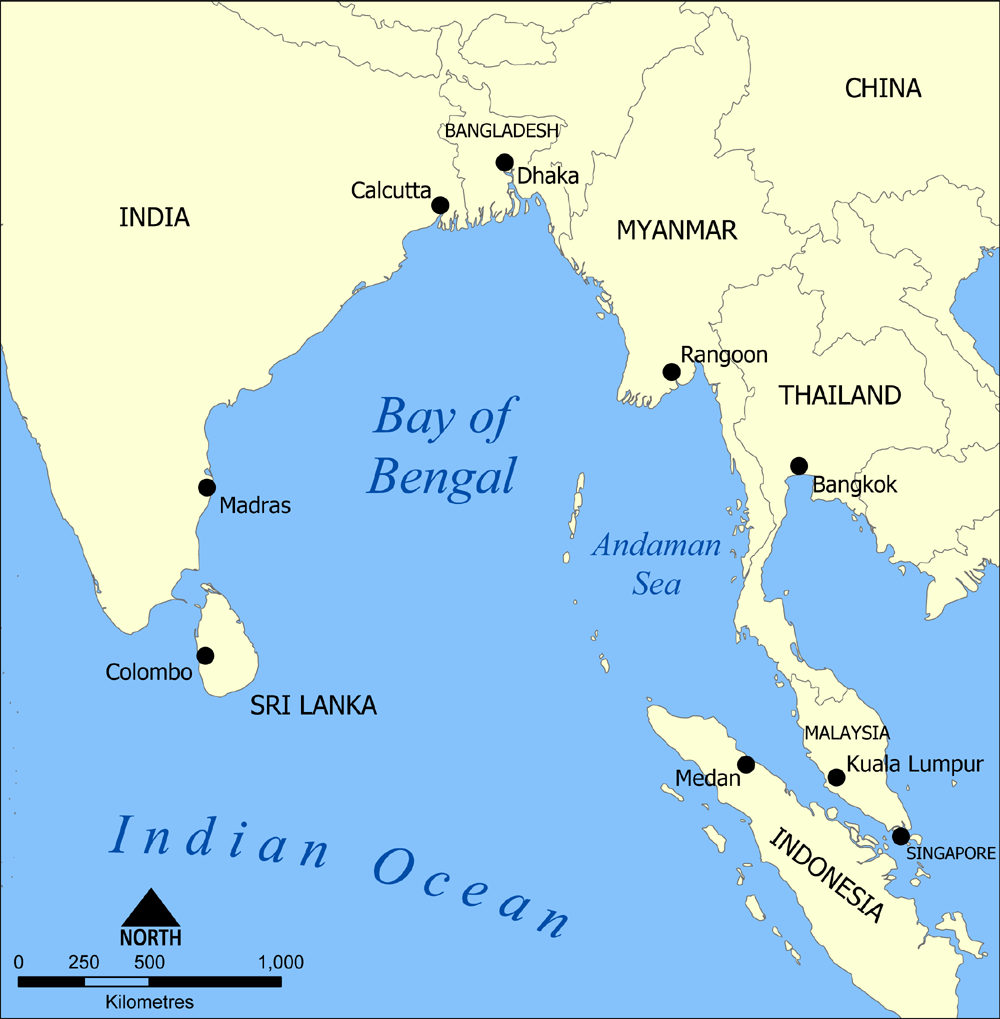Font size:
Print
India’s Bay of Bengal Strategy and Bangladesh
India’s uneasy balancing act in the Bay of Bengal
Context: India’s economic and strategic engagement in the Bay of Bengal region is undergoing a pivotal shift.
More on News
- With increasing trade volumes and infrastructural upgrades across its eastern ports, New Delhi appears to be positioning itself as a key regional trade hub.
- However, recent diplomatic tensions—especially with Bangladesh—have cast a shadow over India’s efforts to promote regional integration through initiatives like BIMSTEC.

India’s Eastern Ports Power Trade Surge
- India’s east coast is seeing robust growth in maritime trade.
- Cargo throughput at major ports like Visakhapatnam (Andhra Pradesh), Paradip (Odisha), and Haldia (West Bengal) has steadily increased.
- This surge is supported by government initiatives such as the Sagarmala Programme, which focuses on boosting port-led development and improving coastal connectivity.
- Additionally, policy incentives such as GST cuts on bunker fuel and support for coastal shipping have further stimulated maritime logistics.
- Earlier this year, the signing of the BIMSTEC Maritime Transport Cooperation Agreement raised hopes for reduced port costs and harmonised customs procedures across the Bay of Bengal region, long plagued by fragmented trade flows and minimal economic integration.
Transshipment Facility Withdrawal Sparks Diplomatic Fallout
- However, India’s decision in April to withdraw the transshipment facility granted to Bangladesh has disrupted this trajectory.
- The facility allowed Dhaka to use Indian ports to export goods to third countries—a crucial logistical lifeline for its booming ready-made garment (RMG) industry, which accounts for over 85% of Bangladesh’s export earnings.
- While New Delhi cited congestion and logistical delays at its terminals, many in Bangladesh interpreted the move as a geopolitical message, especially after Bangladesh’s interim Chief Adviser described India’s Northeast as “landlocked” and presented Bangladesh as a maritime gateway during a speech in Beijing.
- This narrative clashed with India’s strategic vision, which views the Northeast as a critical node for regional connectivity—not as a region dependent on others.
Strategic Connectivity and India’s Maritime Vision
- India has consistently emphasised the strategic and economic significance of its Northeastern states, investing in multimodal infrastructure to integrate them into regional supply chains.
- The doubling of cargo movement along India’s east coast in the past decade reflects this commitment.
- At the regional level, India is working to revitalise BIMSTEC (Bay of Bengal Initiative for Multi-Sectoral Technical and Economic Cooperation).
- The recent maritime transport agreement is a key pillar of this vision, designed to foster seamless multimodal linkages and reduce trade friction across member countries like Nepal, Bhutan, and Myanmar, which rely heavily on Indian ports for access to global markets.
Trade Retaliation and Eroding Trust
- Tensions escalated in May when India imposed restrictions on seven categories of Bangladeshi imports—including garments, processed foods, and plastics—through land ports in the Northeast.
- These products can now only be imported via seaports such as Kolkata or Nhava Sheva, increasing logistical costs.
- Indian officials cited Bangladesh’s earlier restrictions on yarn imports as justification, but critics argue that India’s actions came first and seem disproportionate.
- The perception in Dhaka is that India is using trade access as political leverage, in response to Bangladesh’s growing ties with China and resumed maritime engagement with Pakistan.
- While strategic balancing is a reality in geopolitics, using economic connectivity to express political displeasure risks undermining the very regionalism India seeks to champion.
Implications for Regional Integration in the Bay of Bengal
- Countries like Myanmar, Thailand, and Sri Lanka are watching closely.
- The concern isn’t that India is asserting influence—that’s expected of a regional power—but that it is doing so in economic domains previously shielded from geopolitical contests.
- Maritime trade corridors, once promoted as shared infrastructure for regional prosperity, are beginning to feel more transactional.
- This not only weakens the credibility of India’s leadership but could also slow progress on initiatives like the proposed BIMSTEC Free Trade Agreement, which has the potential to transform intra-regional commerce.
Balancing Strategic Interests with Regional Trust
- India remains the dominant maritime power in the Bay of Bengal, with the most advanced port infrastructure and growing cargo-handling capacity.
- However, infrastructure strength must be matched with credibility.
- If regional partners perceive Indian trade facilitation as subject to political fluctuations, they may begin to hedge by diversifying trade routes—potentially toward China or ASEAN economies.
- To regain confidence, India should consider reinstating the Bangladesh transshipment facility under a clear, rules-based mechanism that insulates trade from political turbulence.
- Doing so would send a strong message to all BIMSTEC members that India remains committed to fair, predictable, and cooperative economic engagement.
